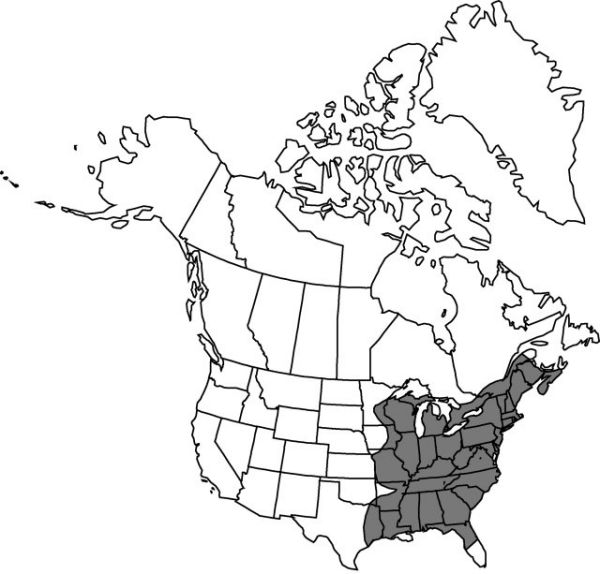Platanthera flava
Gen. Sp. Orchid. Pl., 293. 1835.
Plants 13–65 cm. Leaves (1–)2–3(–4), spreading to ascending, gradually to rather abruptly reduced to bracts distally; blade lanceolate to elliptic-oblong, 5–35 × 1–7 cm. Spikes lax to dense. Flowers resupinate, inconspicuous, yellowish green; lateral sepals porrect to reflexed; petals oblong-orbiculate to ovate, apex somewhat crenulate; lip descending to commonly reflexed, 2–6 × 1.8–5 mm, base auriculate, with prominent central tubercle, distal margin entire to slightly crenulate; spur cylindric to strongly clavate, 4–8(–11) mm, apex rarely 2-lobed; rostellum lobes mostly parallel to slightly diverging, directed downward, minute, obscure; pollinia remaining enclosed in anther sacs; viscidia mostly quadrangular, oblong-quadrangular, orbiculate, or broadly asymmetric, commonly canaliculate to nearly cylindric and difficult to assess; ovary rather slender to stout, mostly 8–10 × 2 mm.
Distribution

e North America.
Discussion
Varieties 2 (2 in the flora).
Selected References
None.
Key
| 1 | Lip (excluding auricles) subquadrangular, suborbiculate, or broadly ovate, often emarginate; inflorescences usually rather lax, slender (this enhanced by floral bracts mostly shorter than flowers). | Platanthera flava var. flava |
| 1 | Lip (excluding auricles) oblong, usually obtuse, (rarely triangular, acute); inflorescences usually rather dense, stout (this emphasized by floral bracts usually long, often greatly exceeding flowers). | Platanthera flava var. herbiola |